On July 4, 68 AD. Ulpia Marciana gave birth to a girl. Ulpia, who was married to a wealthy praetor from Vicetia (present-day Vicenza) named Gaius Salonius Matidio Patruinus, was a Hispanic noblewoman whose brother (Marcus Ulpius Trajan) would rule the Roman Empire 30 years later (from 98 AD) as the first provincial emperor .
The girl, who, following Roman custom for naming women, was called Salonia Matidia, was treated by her uncle Trajan (who never had children) as if she were her own daughter. For this reason, when his father Patruino, who had reached the position of priest and member of the Brotherhood of the Arvales, died in the year 78, Trajan took his sister Marciana and his niece Matidia to live with him and his wife Plotina. .
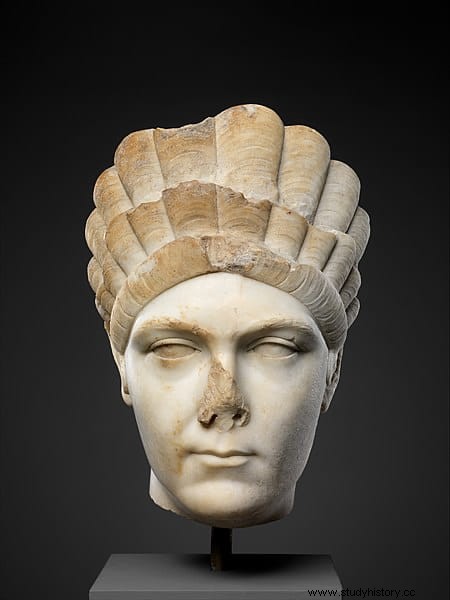
Around the year 81, when Matidia was 13 years old, she married Lucio Vibio Sabino, a senator who soon left her a widow but before her, on August 13, 83 AD. they had a daughter named Vibia Sabina.
Matidia would marry twice more throughout her life, and would have two other daughters, Mindia Matidia (known as Matidia the younger to distinguish her from her mother) and Rupilia Faustina. Both, along with her sister Vibia Sabina, lived with Trajan and his wife.
Mindia Matidia never married, which was unusual in those days, and she devoted her time and her fortune to charity. She outlived most of her relatives, as she reached the age of 75.
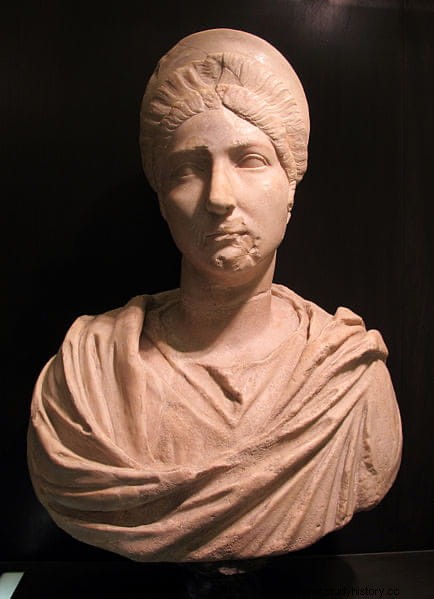
Her stepsister Rupilia Faustina did not live that long, about 53 years old, but she did get married and had several children. One of them was Marco Annio Vero, who would be the father of the future Emperor Marcus Aurelius.
In the year 100, when Trajan was already emperor, his wife Plotina, in agreement with Matidia, agreed that Vibia Sabina should marry a great-nephew of the emperor. This was none other than Hadrian, who was also Matidia's second cousin and heir to the empire.
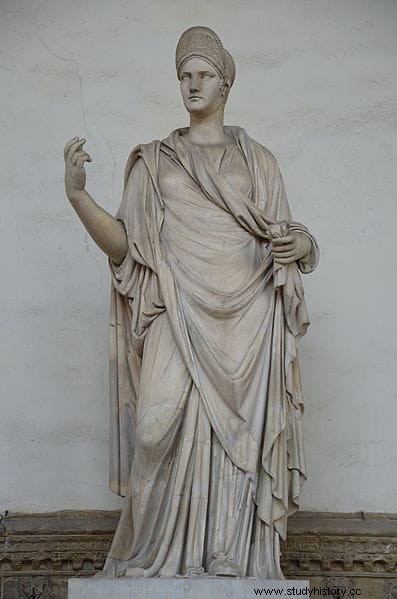
Matidia had a great influence on her uncle, whom she assisted in making decisions, and with whom she used to travel regularly. On August 29, 112 AD. Her mother Ulpia Marciana, Trajan's sister, passed away, and as was customary in the imperial family, she was deified of her. That same day Trajan named Matidia Augusta , which was the honorary title that was granted to empresses and prominent women of the imperial family since Claudius granted it to Livia (Augustus's wife) at his death, and to his own wife Agrippina in life.
When Trajan died at the beginning of August 117 in Selinus (in ancient Cilicia, the southern coast of Anatolia), he was cremated and the urn containing his ashes was carried by Matidia and Plotina to Rome, where it was placed under Trajan's column. /P>
Just before Trajan died he had adopted Hadrian as his successor, who was the son of his cousin and was married to his great-niece Vibia Sabina. He was also the only direct male relative she had left. With this, Matidia went from being the niece of one emperor to being the mother-in-law of another.
And her relationship with Adriano seems to have continued to be just as good as with her uncle Trajano. Unfortunately the women of the imperial family during the reign of these emperors are rarely mentioned in classical sources. And when they do, it is to praise them according to Roman ideology as modest, discreet and reserved. All we know of them comes mainly from inscriptions.
According to Emily Ann Hemelrijk in her book Learned Matron about Roman women:
Thus, when Matidia died in December 119 at the age of 51, Emperor Hadrian pronounced his funeral oration, deified her and granted her a temple and an altar in Rome itself, the first time that a deified woman was it gave her a temple of her own instead of one shared with her husband.
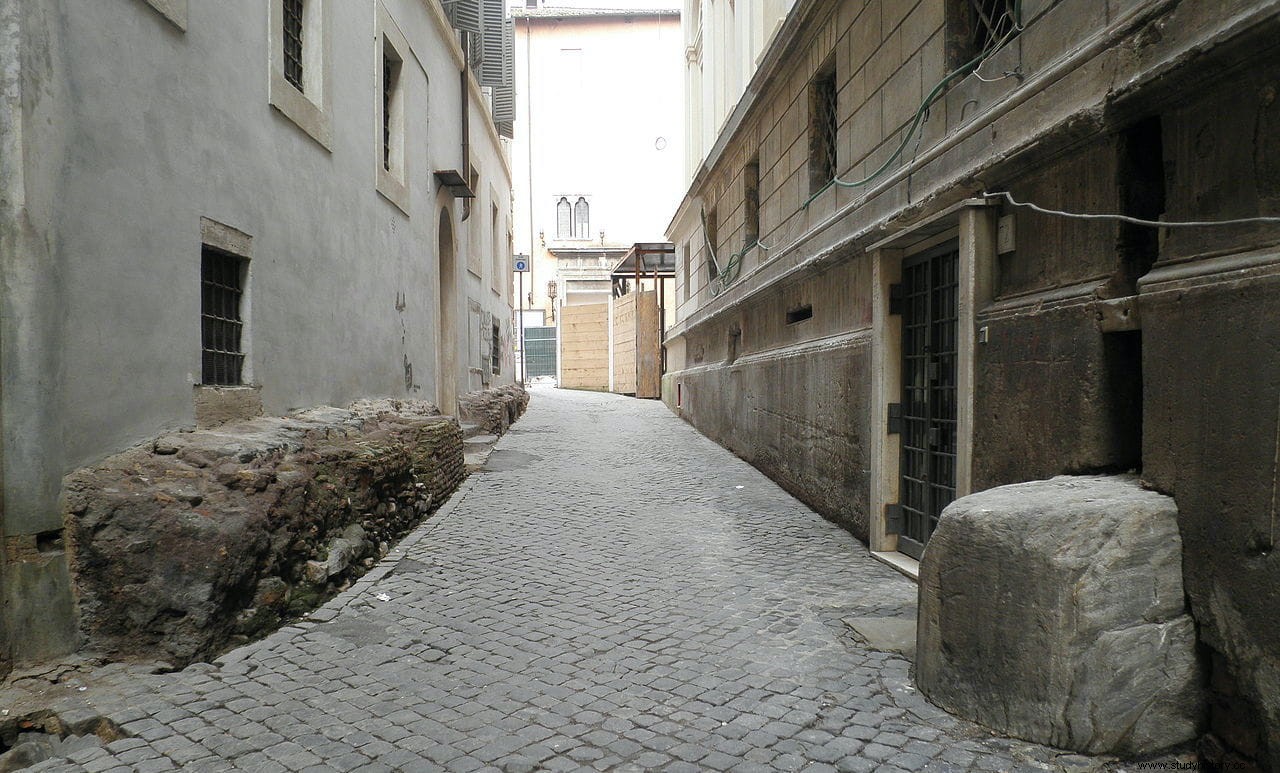
Adriano's speech, where she praised her among other things for her exceptional modesty, since she never asked him for a favor from her, although he would have liked to grant it , was preserved in an inscription at Tibur (modern Tivoli), where Hadrian had his famous villa and where Matidia is believed to have died. It was found in the 16th century and transcribed, although it was later lost. It is possible that it belonged to the base of a statue, although it is not certain. When copying it was damaged, so the speech is incomplete and some lines and words are missing.
Adriano praises Matidia as if she were her own mother, praising her loyalty to her family. He then expresses her grief at the death of his beloved mother-in-law and talks about her beauty, her modesty, and her kindness.
According to Christopher Jones, it would not be a funeral oration, but a speech delivered by Hadrian in the Senate, requesting the consecration and deification of his mother-in-law.
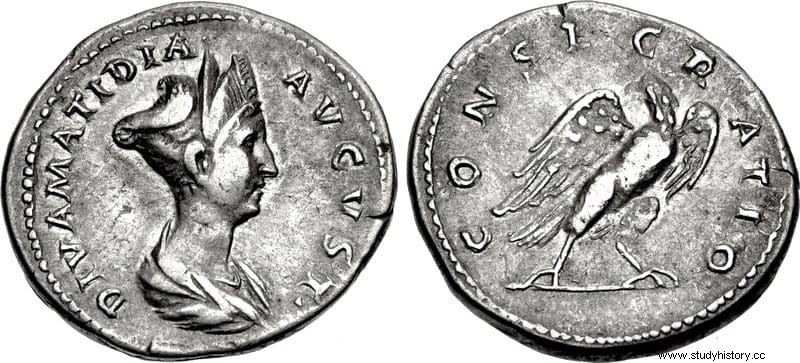
Among the honors of her that Hadrian bestowed on her was also the minting of coins of her, showing her as Augusta Matidia deified along with the eagle that took her to the skies on the backs of her. Gladiatorial games were organized and generous amounts of grain and food were distributed. The Arvales brothers offered for her a kilo of perfume and 22 kilos of incense .
The temple was built on the Champ de Mars next to the Saepta Julia (a structure that had a large rectangular courtyard 310 by 120 meters with a portico on each side) and near the Pantheon. On each side of the cella of the temple, of which only a few visible stones remain (in the Vicolo della Spada d'Orlando, between Via dei Pastini and Piazza Capranica), there was a basilica. One bore the name of Matidia herself, and the other that of her mother, her Martian.
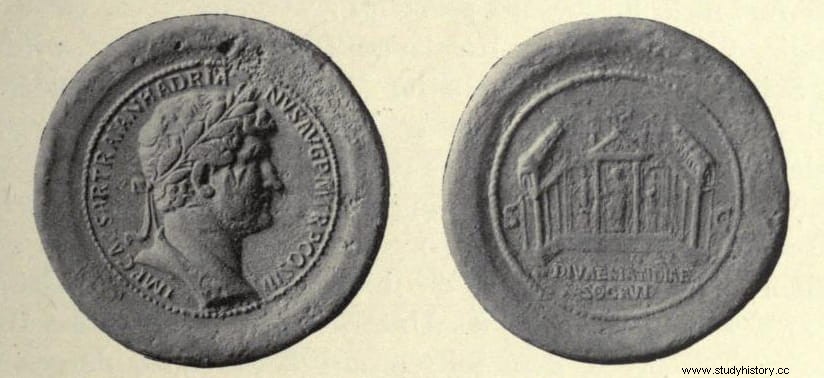
The temple appears on the reverse of a bronze medallion minted by Hadrian with the legend DIVAE MATIDIAE SOCRVI (to the deified Matidia, her mother-in-law ), showing a small aedicule with two columns and a triangular pediment, on which an enthroned female figure is seated. On both sides of the aedicule there are porticoes two stories high, possibly the basilicas.
A fragment of the Forma Urbis suggests that the temple was octastyle, with eight columns at the front and rear and thirteen on each side, and that its portico covered roughly the same area as Hadrian's later temple, some 100 by 65 meters.
